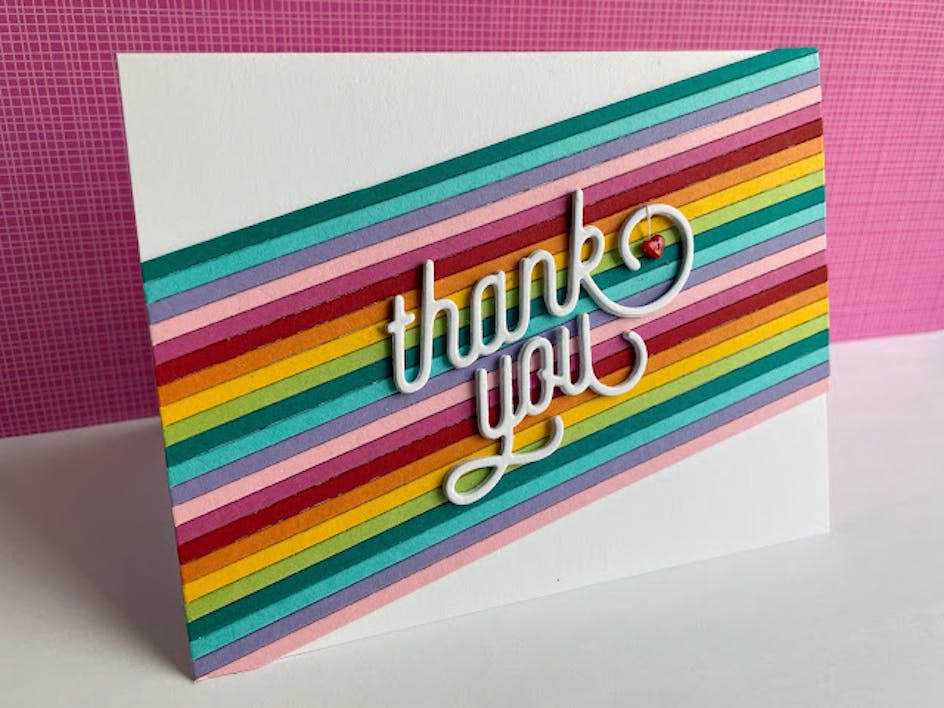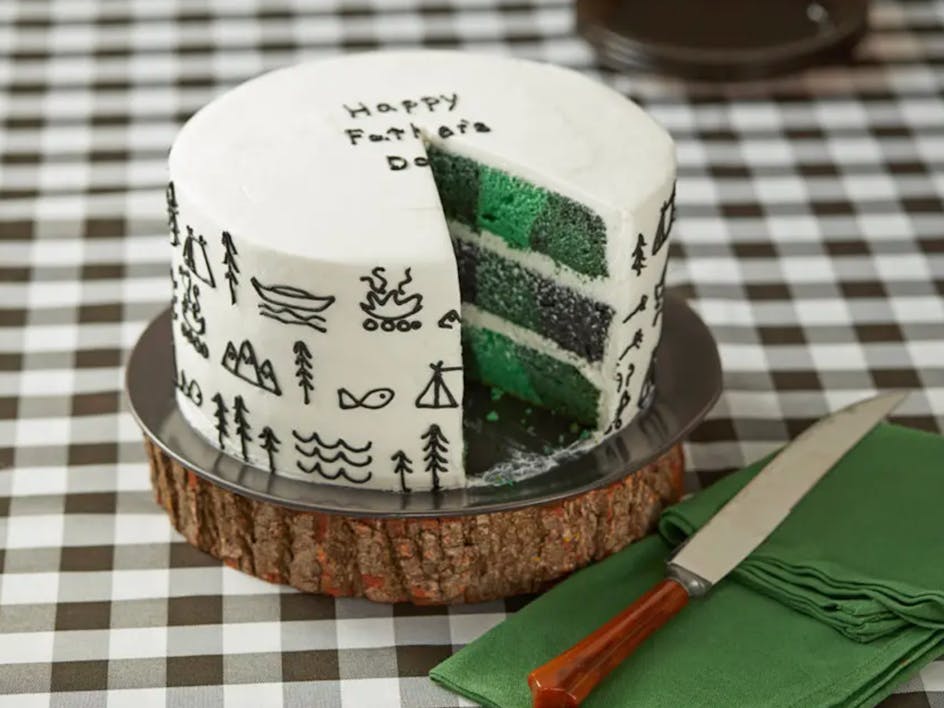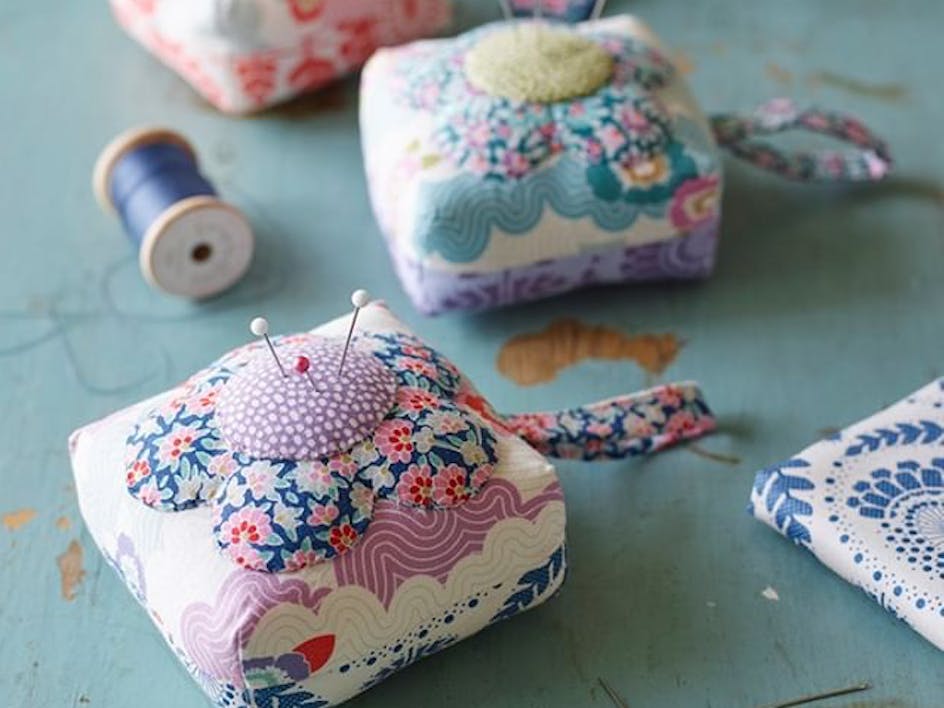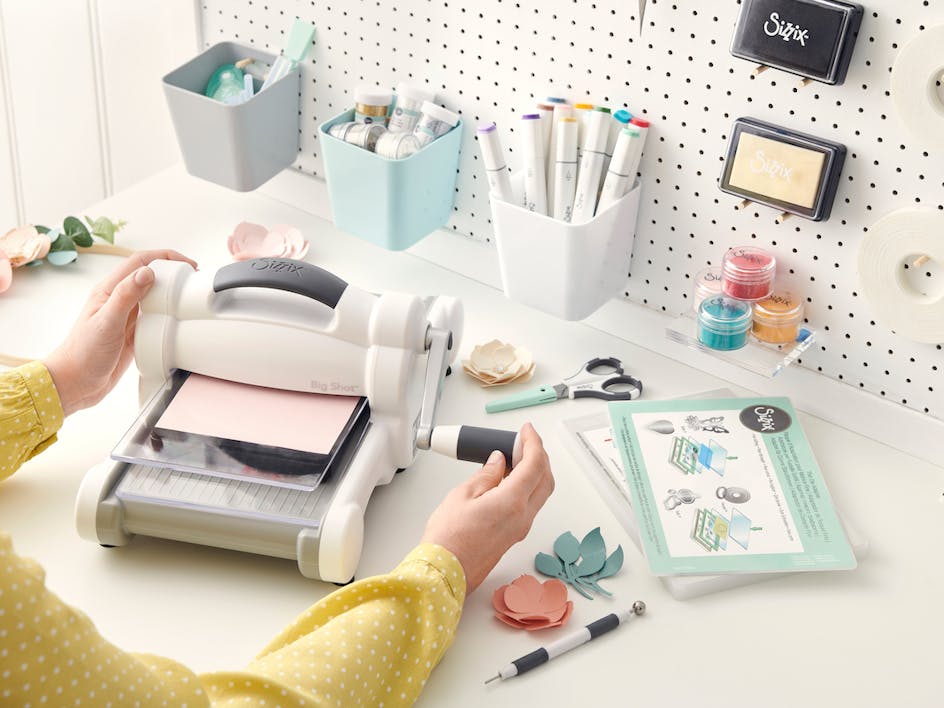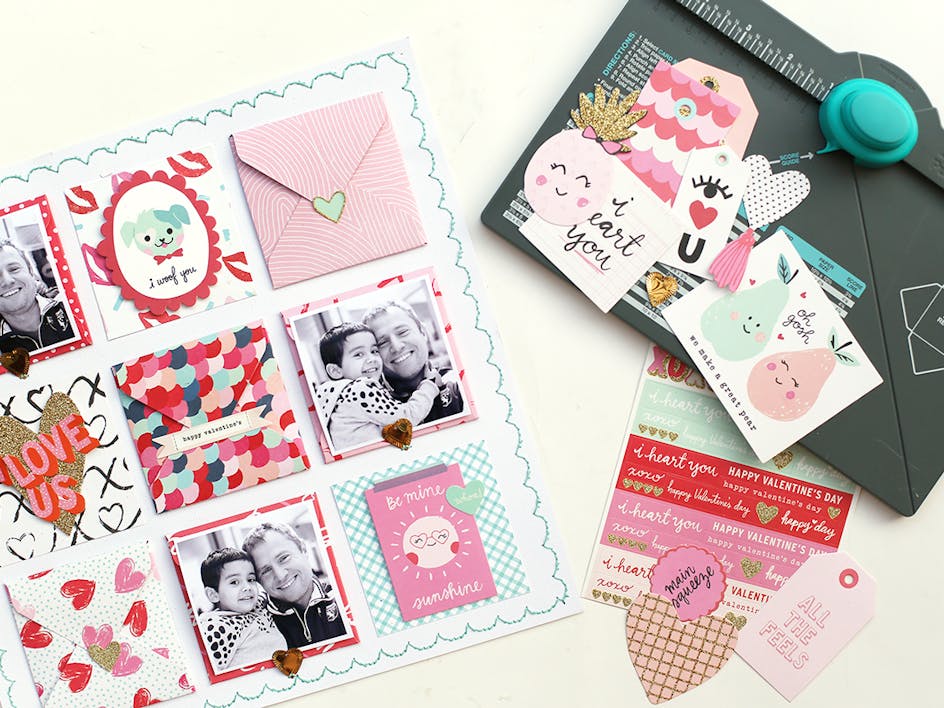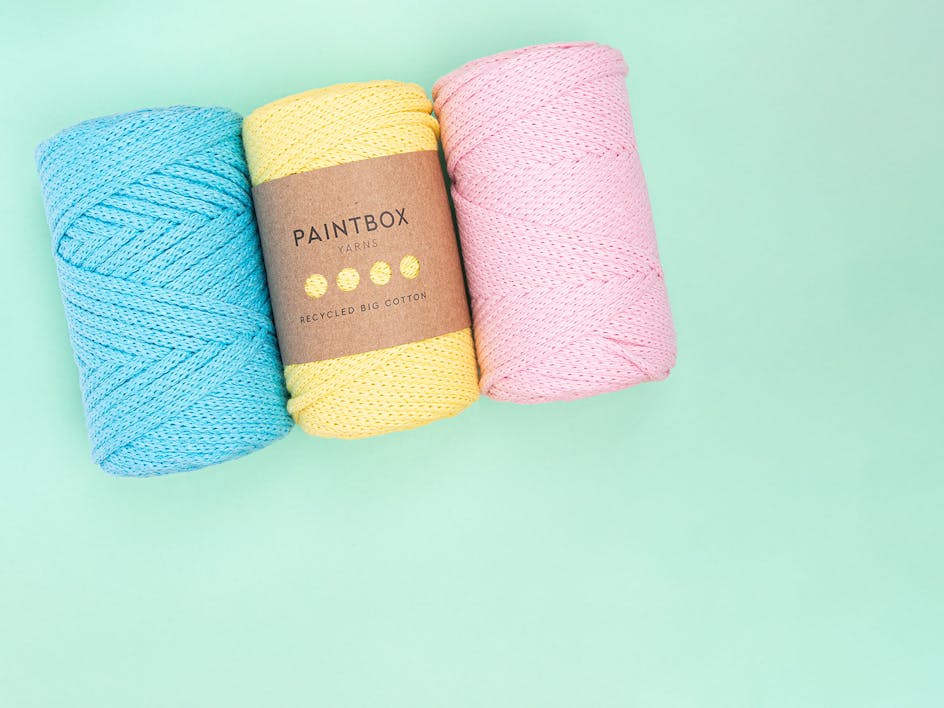The ultimate beginners guide to quilting: all you need to know to get started
Published on October 29, 2019 9 min read
Calling all beginner quilters! Fancy adding a new craft to your repertoire? Once you get the knack of quilt making, you’ll never look back! From the basic equipment you need in your stash to how to make your first quilt – our ultimate guide to quilting for beginners has all you need to get started.
The essential tools you need for quilting
There's nothing more exciting than building a new stash, so get started on your quilting journey by stocking up on all the kit you need to get started and get set for a lifetime of making!
1. Rotary cutter
A good rotary cutter will become your quilting bff! A rotary cutter is simply a rolling razor blade that you can use along the edge of a quilting ruler to cut several layers of fabric into shape at once, with super speedy quick, easy and precise results.
3. Fabric scissors
While rotary cutters come in smaller sizes perfect for cutting out more complicated shapes; there are bound to be times when only fabric scissors will do the trick. They’re also essential to have on hand for cutting thread and trimming any loose edges.

Karen Kay Buckley Perfect Scissors 6" By Karen Kay Buckley
5. Quilting ruler
Quilting rulers come in all shapes and sizes, but it’s a good idea to get a medium-sized square one to begin with. You’ll use this to measure up stencils and fabric, and to guide your rotary cutter when you’re cutting shapes.

Bloc Loc Half Triangle Ruler 4.5" By Bloc Loc
7. Fabric marker and eraser
A fabric marker is essential for creating guides on fabric without leaving any nasty marks! With this pen and eraser duo, you can mark clear accurate lines onto your fabric without bleed and then use the eraser to make them disappear once you’ve finished. Magic!

Sewline Duo Marker & Eraser By Sewline
The essential materials for quilting
The best part of any quilting project is undoubtedly choosing the fabric! The fabric is usually the decorative or colorful design that you’ll find on the front of your quilt. Whether you’re a fabric hoarder who keeps heaps in their stash, or a specialist selector who only buys for each project – the fabrics you choose will give your quilts your own personal stamp.
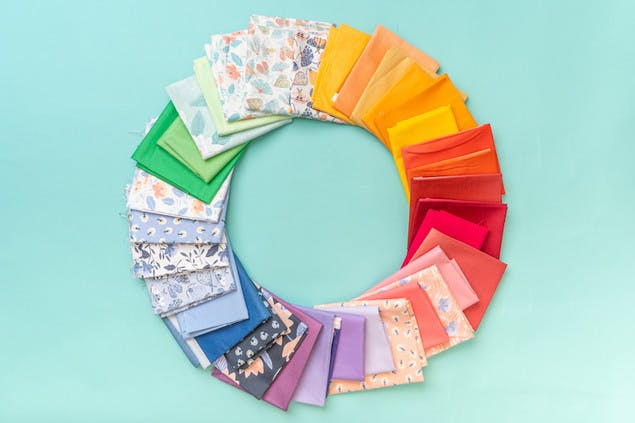
What’s the best fabric to use for quilting?
There is no right or wrong fabric to use in quilting. It’s all about personal preference and your budget. Some of the most popular choices are:
- Cotton: 100% Cotton fabrics are the most popular choice for both top and backing fabric. Available in lots of colors and designs, there is usually lots to choose from!
- Fleece: Used as a backing fabric for a super warm quilt. Soft and cozy but can be expensive and prone to pilling after washing.
- Flannel: Can be used as a top or backing fabric for a soft and snuggly warm quilt. Less expensive than fleece, but it can shrink and fray along the edges. Popular for quilts for babies and children
- Wool: One of the more expensive fibres to use, but is super warm, and super durable. Suitable for heavy duty quilts, you'll need a high quality thread and a good strong needle!
Layer cakes, jelly rolls and honey buns – what are they in quilting?
Besides sounding delicious enough to eat, these are the names of differently sized pre-cut fabrics. They are usually collections of fabric that have been previously cut by machine, stacked into piles or rolled up, and tied together.
The most common pre-cut fabrics include:
- Fat quarters: 18 inch x 22inch (50cm x 55cm)
- Charm packs: 5 inch squares (12.7cm x 12.7cm)
- Layer cakes: 10 inch squares (25.4cm x 25.4cm)
- Jelly rolls: 2.5 inch strips (6.4cm strips)
- Honeybuns: 1.5 inch strips (3.8cm strips)
Kickstart your stash with our fantastic fabric bundles
Thread
Threads come in so many varieties, colors and materials and you need to make sure you’re selecting the right thread for your project and your machine. You want to match the thread both in color and in fibre, so choose cotton thread for natural fibres, polyester thread for synthetic fabrics, silk thread for silk fibre and so on.
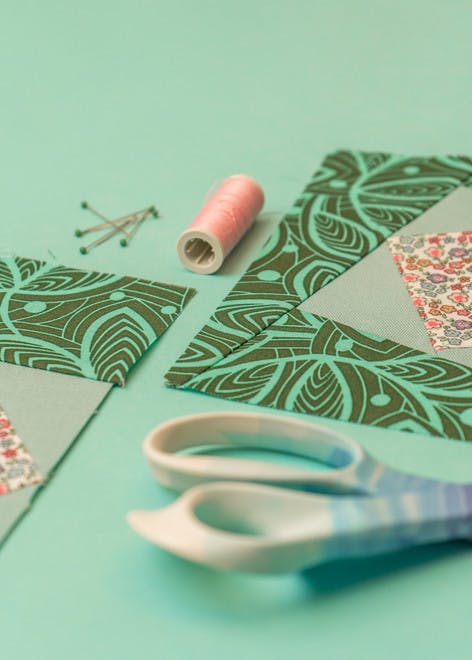
What’s the best thread to use for quilting?
- Cotton: Cotton thread can stand an incredible amount of heat from an iron, which is key when pressing cotton fabrics. The most popular choice with quilters.
- Polyester: Polyester thread is a true all-purpose thread. Also a popular choice with quilters and less expensive than cotton.
- Silk: Silk thread is very fine, perfect for sewing silk fabric.
- Metallic: Metallic thread is often used for topstitching, but be careful when ironing over metallic thread – always cover with cotton cloth before ironing
- Monofilament: This is a sewing thread that looks invisible when stitched into fabric.
You’ll also need to consider whether you want a matte finish (cotton) or a shiny finish (rayon) on your thread.
Batting
Also known as wadding, batting goes in between the fabric and the backing to create a quilt sandwich that makes them all warm and snuggly! Batting is measured by its loft – the weight and thickness of the padding inside your quilt. Low loft means thin and high loft means thick. You can buy batting in all sorts of different colors, materials, lofts and sizes – so you’ll need to do your research to make sure you’re picking the right one for your first project.
What’s the best batting to use for quilting?
- Polyester: The most common quilt batting. It holds its thickness and shape best when compared to other types of batting.
- Wool: Very warm and light. It also holds its shape really well and bounces back if crumpled. Wool is a natural fiber and resistant to creases. However, it is one of the more expensive batting types.
- Cotton: Very soft and comfortable.
Backing
The backing is – as the name suggests – the back of your quilt. 100% cotton backing is the most popular option, but you can also use something more cosy like fleece or flannel. You can also use scrap fabrics left over from the front or other projects.
Binding
Binding is a strip of fabric that is folded and then wrapped and sewn along the sides of the quilt to create a border.

How to make your first quilt
Planning your patterns and colors
Planning patterns, choosing colors and watching your quilt come to life before your eyes is one of the most exciting and rewarding parts of quilt making. As we well know, every maker works in different ways, and it’s no different when it comes to quilting.
You might find that you have lots of gorgeous fabrics building up in your stash and then look for a quilt to make - or, you might find a project design first and then buy the fabric - there’s no right or wrong way!
When you have an idea of what you want to make and the fabric you want to use; look at the colors featured in the print and use coordinating shades to form your quilt. If you choose a printed fabric, think about the scale of the pattern. A large printed design will be lost if its used for small pieces.
If you’re planning a quilt to fit a color scheme (for a nursery, as an example) or to gift someone's favorite colors – use a color wheel to discover complementary colors (situated opposite each other on the wheel). These are the colors that will work best with your initial color or the main color in a pattern.
Don’t forget to plan your thread colors with as much attention you give to your fabrics!


How much fabric do I need to make a quilt?
Making a quilt for you bed? Determine how large and wide your quilt needs to be with our how to size your quilt guide.
First thing’s first – measure the width (W), length (L) and depth (D) of your mattress then find out the dimensions of your quilt using this simple formula:
W+(2 * D) = Quilt Width
L + D = Quilt Length
For example, if your mattress has a width of 60 inches, length of 80 inches and depth of 12 inches:
- 60 + (2 x 12) = 84″ (ideal quilt width)
- 80 + 12 = 92″ (ideal quilt length)
- Quilt pattern should ideally finish at 84″ x 92″ for this bed.
You can also use this standard mattress size guide as a reference:
- Twin: 39 x 75 inches
- Twin XL: 39 x 80 inches
- Full: 54 x 75 inces
- Queen: 50 x 80 inches
- King: 78 x 80 inches
- King: 72 x 84 inches
You’ll also need to decide how much of your quilt will be made up of blocks, and how much of the size will be taken up by the border. The best way to do this is to make a sketch of your quilt and make sure the blocks and borders fit within your dimensions.
For instance, for a quilt that measures about 60 inches x 80 inches, six 10 inch blocks across and eight 10 inch blocks down will fill the space, requiring 48 blocks – that’s without a border.
If maths isn’t your strong suit, there are several quilting calculators online you can use to do the maths for you!
You're ready to make your first quilt!
Want some Instagram inspiration? Check out our must-follow quilting accounts for heaps of inspiration!
Try out our fab free quilting patterns!

Michael Miller Fabrics Fairy Frost Crayon Box Quilt - Downloadable PDF

Windham Fabrics Lemon Fresh - Downloadable PDF

Michael Miller Fabrics Flowertopia Quilt - Downloadable PDF

Riley Blake Just Dreamy - Downloadable PDF

Riley Blake Doily - Downloadable PDF

Michael Miller Fabrics Evergreen Quilt - Downloadable PDF


